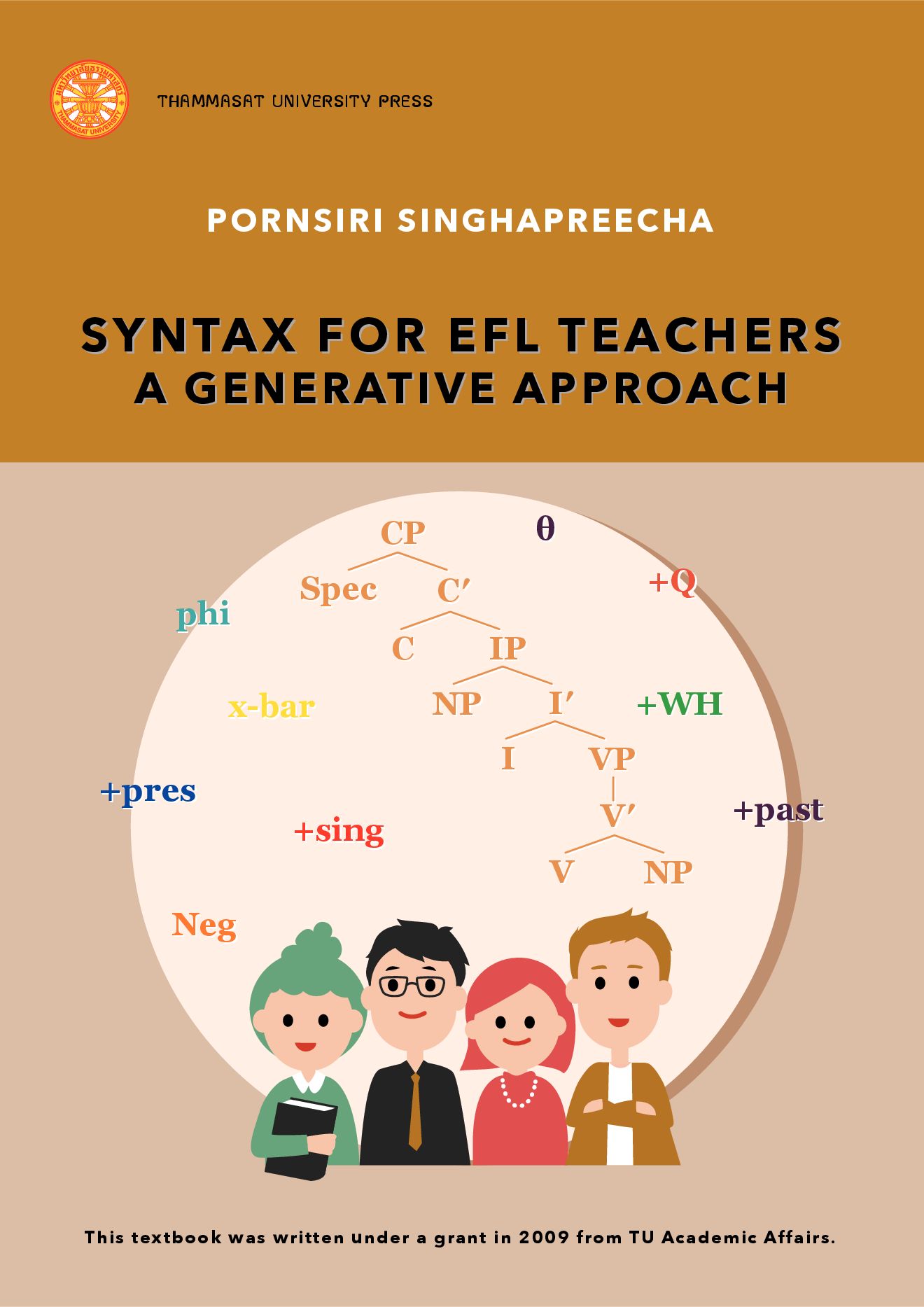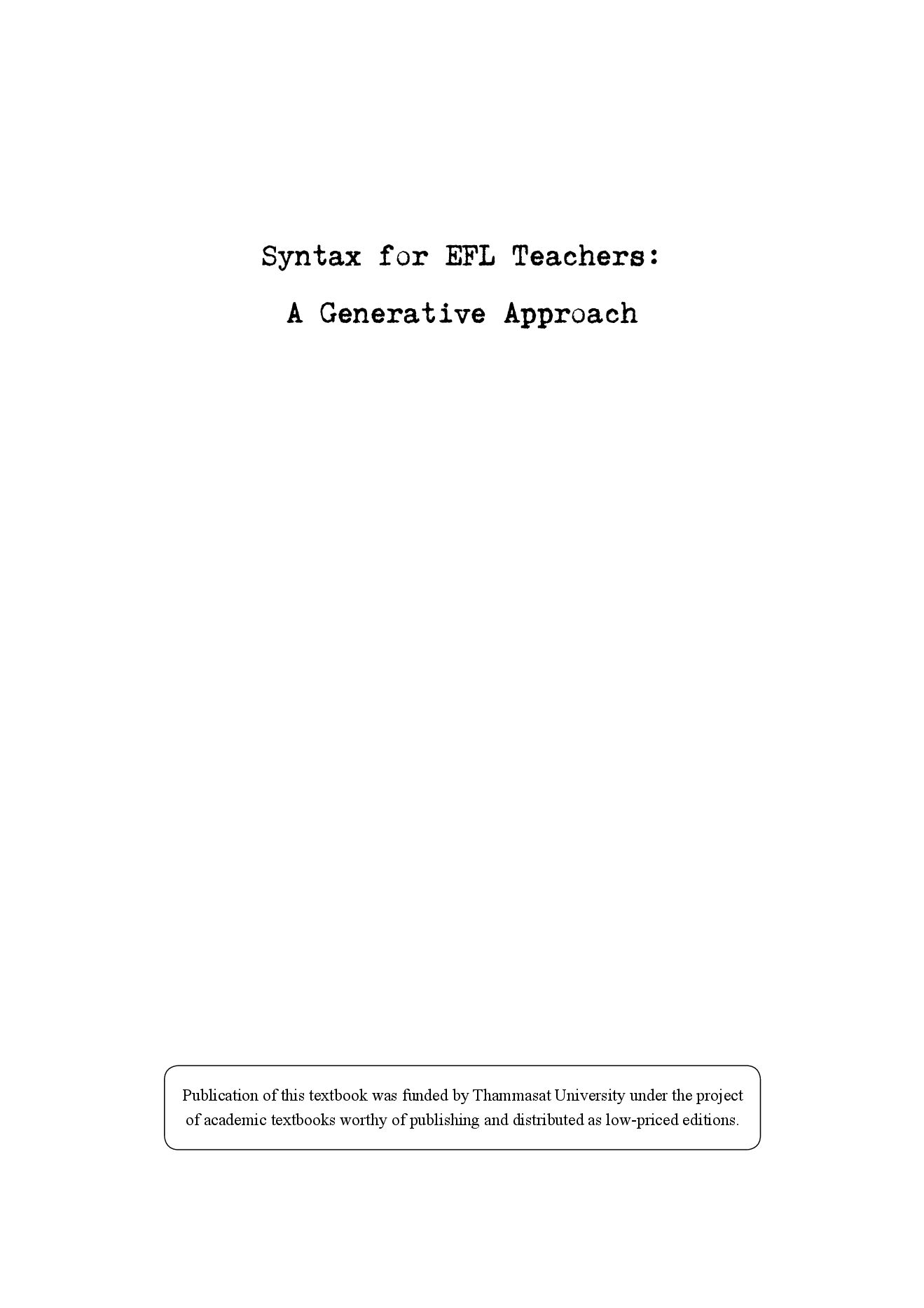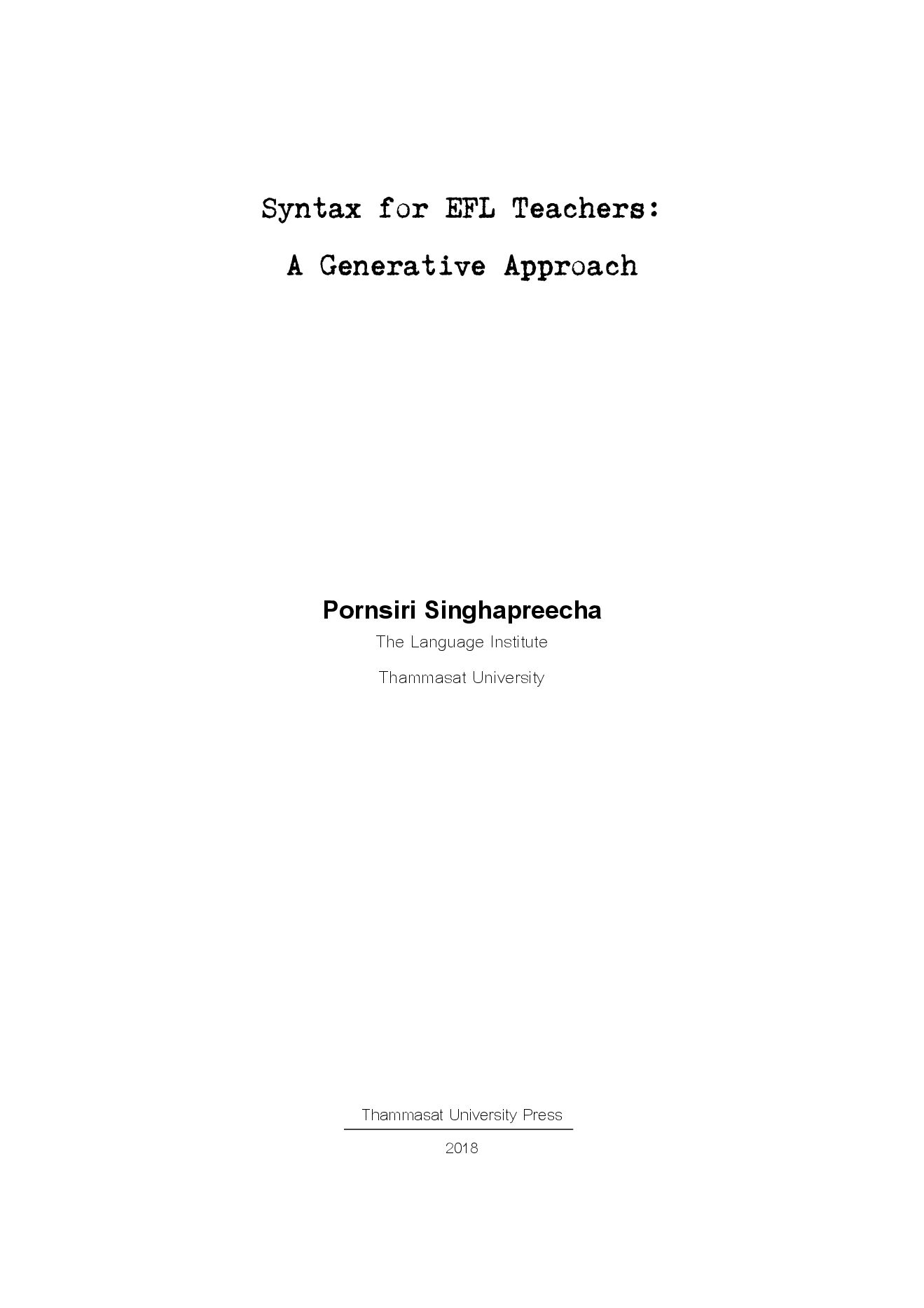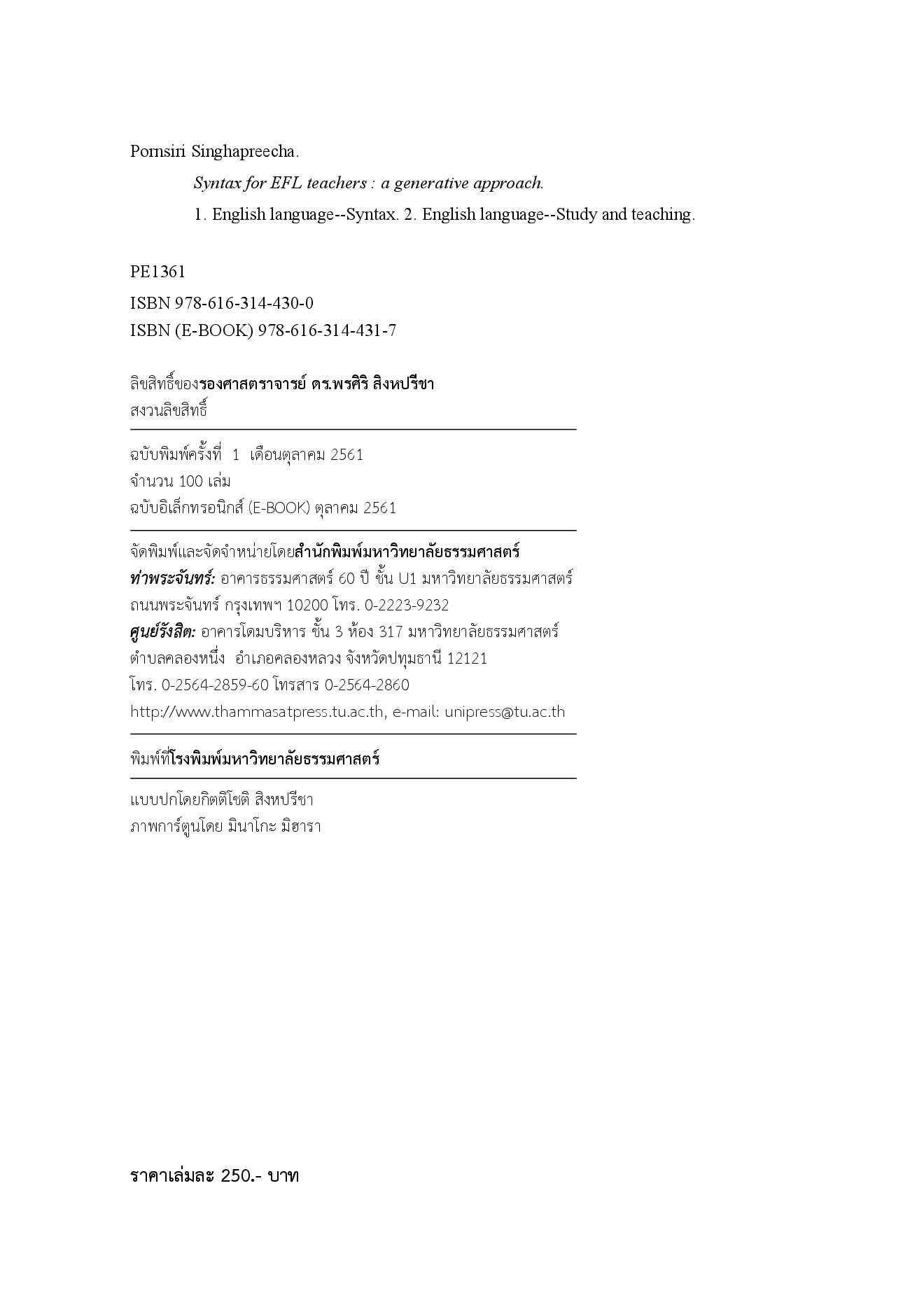Syntax for EFL Teachers : A Generative Approach
Syntax for EFL Teachers : A Generative Approach
฿210.00
฿210.00
- ประเภท : อีบุ๊ก
- สำนักพิมพ์ : สำนักพิมพ์มหาวิทยาลัยธรรมศาสตร์
- Author : พรศิริ สิงหปรีชา
- ISBN :9786163144317
- ภาษา : Eng
- จำนวนหน้า : 194
- ขนาดไฟล์ : 2.98 MB
As its name, Syntax for EFL Teachers: A Generative Approach, suggests, this book is a two-pronged project. It provides a formal background in English syntax, while targeting EFL practitioners. Keeping in mind the EFL audience, I have chosen the Generative model which is closely related to the framework widely adopted in the EFL literature (e.g. Celce-Murcia and Larsen-Freeman (1999)). In addition to its application in English pedagogy, the Generative model can serve as a stepping stone to the understanding of the literature in second language acquisition research that has its basis on formal approaches. With my target audience in view, it occurs to me that there has not been a textbook that can present theoretical syntax in a way to aid EFL teachers to be able to diagnose their students’ problems scientifically. Therefore, I have written this book to serve this purpose. It is also a book I use in courses entitled “Syntax for EFL Teachers” and “Linguistic Foundations for English Language Teachers,” offered at the Master’s degree Program in English Language Teaching(MA-ELT) of the Language Institute of Thammasat University.
1. Core Ideas to the Understanding of Grammar
2. Elements of Sentence Structure
3. Technical Apparatus
4. Main Verb and Auxiliary Constructions
5. Wh-Movement Transformation
6. NP Movement
End.
As its name, Syntax for EFL Teachers: A Generative Approach, suggests, this book is a two-pronged project. It provides a formal background in English syntax, while targeting EFL practitioners. Keeping in mind the EFL audience, I have chosen the Generative model which is closely related to the framework widely adopted in the EFL literature (e.g. Celce-Murcia and Larsen-Freeman (1999)). In addition to its application in English pedagogy, the Generative model can serve as a stepping stone to the understanding of the literature in second language acquisition research that has its basis on formal approaches. With my target audience in view, it occurs to me that there has not been a textbook that can present theoretical syntax in a way to aid EFL teachers to be able to diagnose their students’ problems scientifically. Therefore, I have written this book to serve this purpose. It is also a book I use in courses entitled “Syntax for EFL Teachers” and “Linguistic Foundations for English Language Teachers,” offered at the Master’s degree Program in English Language Teaching(MA-ELT) of the Language Institute of Thammasat University.
1. Core Ideas to the Understanding of Grammar
2. Elements of Sentence Structure
3. Technical Apparatus
4. Main Verb and Auxiliary Constructions
5. Wh-Movement Transformation
6. NP Movement
End.
1. Core Ideas to the Understanding of Grammar
2. Elements of Sentence Structure
3. Technical Apparatus
4. Main Verb and Auxiliary Constructions
5. Wh-Movement Transformation
6. NP Movement
End.







